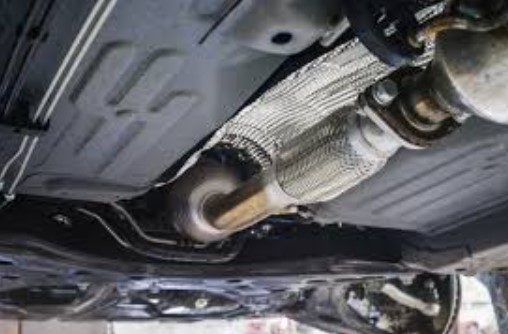The Evolution of Car Exhaust Systems: From Early Designs to Modern Innovations

Car exhaust systems have undergone significant transformations since the advent of the automobile. Initially designed to merely expel harmful gases from the engine, exhaust systems have evolved to enhance performance, reduce emissions, and meet stringent environmental standards.
This article explores the evolution of car exhaust systems, tracing their development from early designs to modern innovations.
The Beginnings: Early Exhaust Systems
Early Automobile Exhaust Systems
The earliest automobiles, developed in the late 19th and early 20th centuries, had rudimentary exhaust systems. These systems were primarily designed to channel exhaust gases away from the engine and the passenger compartment. The main components were simple pipes that directed gases out of the vehicle.
Introduction of Mufflers
As automobiles became more popular, the noise produced by exhaust gases became a concern. The introduction of mufflers in the early 20th century marked a significant advancement. Mufflers were designed to reduce noise by directing exhaust gases through a series of chambers and perforated tubes. This innovation made driving more pleasant and less disruptive to the public.
Mid-20th Century: The Advent of Catalytic Converters
Growing Environmental Awareness
The mid-20th century saw growing awareness of the environmental impact of automobile emissions. Research revealed that exhaust gases contained harmful pollutants, including carbon monoxide, hydrocarbons, and nitrogen oxides, which contributed to air pollution and smog.
Development of Catalytic Converters
In response to increasing environmental concerns, the catalytic converter was developed in the 1970s. Catalytic converters use catalysts such as platinum, palladium, and rhodium to convert harmful pollutants into less harmful substances like carbon dioxide, water, and nitrogen. This innovation significantly reduced the environmental impact of car exhaust emissions.
Read also: Transforming Vehicles, Restoring Confidence: Car Bumper Repair Telford
Late 20th Century: Enhancements in Efficiency and Performance
Computerized Engine Management Systems
The late 20th century witnessed the integration of computerized engine management systems in vehicles. These systems allowed for more precise control of the air-fuel mixture and ignition timing, resulting in improved combustion efficiency and reduced emissions. The exhaust system played a crucial role in monitoring and optimizing engine performance.
High-Flow Exhaust Systems
Performance-oriented vehicles saw the introduction of high-flow exhaust systems. These systems were designed to minimize backpressure, allowing exhaust gases to exit the engine more efficiently. By reducing backpressure, high-flow exhaust systems improved engine performance, increasing horsepower and torque.
Modern Innovations: Advanced Materials and Technologies
Lightweight Materials
Modern exhaust systems utilize advanced materials such as stainless steel, titanium, and ceramics. These materials offer superior durability, corrosion resistance, and weight reduction. Lighter exhaust systems contribute to improved vehicle performance and fuel efficiency by reducing the overall weight of the vehicle.
Variable Exhaust Systems
Variable exhaust systems, also known as active exhaust systems, have become increasingly popular in recent years. These systems use electronically controlled valves to adjust the flow of exhaust gases, optimizing performance and sound characteristics based on driving conditions. Drivers can switch between different modes, such as quiet, sport, and track, to customize their driving experience.
Integration with Hybrid and Electric Vehicles
As the automotive industry shifts towards hybrid and electric vehicles, exhaust systems have adapted to meet the unique requirements of these vehicles. Hybrid vehicles, which combine internal combustion engines with electric motors, require specialized exhaust systems that can handle both power sources. Electric vehicles, which produce no exhaust emissions, have eliminated the need for traditional exhaust systems altogether.
Environmental Regulations and Standards
Emission Standards
Environmental regulations have been a driving force behind the evolution of car exhaust systems. Governments worldwide have implemented stringent emission standards to reduce air pollution and combat climate change. These regulations have prompted automakers to develop advanced exhaust systems that meet or exceed emission standards.
Euro Emission Standards
The European Union has been at the forefront of implementing emission standards. The Euro emission standards, introduced in 1992, have progressively become more stringent. Each subsequent standard (Euro 1, Euro 2, etc.) has set lower limits for pollutants such as carbon monoxide, hydrocarbons, nitrogen oxides, and particulate matter. Compliance with these standards has driven significant advancements in exhaust system technology.
U.S. Environmental Protection Agency (EPA) Standards
In the United States, the Environmental Protection Agency (EPA) has established emission standards for vehicles. The EPA’s Tier 1, Tier 2, and Tier 3 standards have progressively reduced allowable emission levels for pollutants. Automakers have responded by developing sophisticated exhaust systems that incorporate advanced catalytic converters, oxygen sensors, and particulate filters.
The Role of Research and Development
Continuous Improvement
Research and development have been instrumental in the evolution of car exhaust systems. Automakers invest heavily in R&D to develop new technologies and materials that enhance performance, reduce emissions, and improve fuel efficiency. Continuous improvement in exhaust system design is driven by the need to meet regulatory requirements and consumer demands for better-performing vehicles.
Collaboration with Suppliers
Automakers collaborate closely with suppliers specializing in exhaust system components. These collaborations enable the integration of cutting-edge technologies into vehicle designs. Suppliers provide expertise in areas such as catalyst formulation, material science, and manufacturing processes, contributing to the development of advanced exhaust systems.
Future Trends and Innovations
Electrification and Zero Emissions
The future of car exhaust systems is closely tied to the broader trend of vehicle electrification. As more automakers commit to producing electric vehicles (EVs) and phasing out internal combustion engines, the role of traditional exhaust systems will diminish. However, for the remaining internal combustion and hybrid vehicles, further innovations in exhaust technology will focus on achieving near-zero emissions.
Advanced Emission Control Technologies
Future exhaust systems will incorporate advanced emission control technologies, such as selective catalytic reduction (SCR) and lean NOx traps (LNT). These technologies are designed to further reduce nitrogen oxide emissions, which are particularly challenging to control. Integration with advanced sensors and control systems will enable real-time monitoring and optimization of exhaust emissions.
Lightweight and Sustainable Materials
The use of lightweight and sustainable materials will continue to be a key focus in the development of exhaust systems. Researchers are exploring new materials that offer even greater durability, heat resistance, and weight reduction. Sustainable materials, including recycled metals and composites, will contribute to reducing the environmental impact of manufacturing exhaust systems.
Conclusion
The evolution of car exhaust systems from early designs to modern innovations reflects the automotive industry’s commitment to improving performance, reducing emissions, and enhancing fuel efficiency. Advances in materials, technologies, and regulatory standards have driven significant improvements in exhaust system design. As the industry moves towards electrification and zero-emission vehicles, the role of traditional exhaust systems will evolve, with future innovations focused on achieving near-zero emissions and sustainability. The ongoing evolution of exhaust systems will continue to play a crucial role in shaping the future of transportation.



